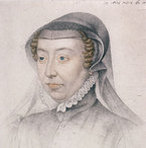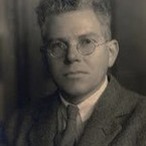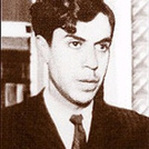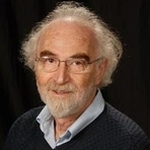|
Franco Fagioli is an Argentinian countertenor "who seems to redefine the capabilities of the countertenor voice." He has won great acclaim for his performance in the role of Arbace in the recent all-male production of Vinci's Artaserse, and will soon be releasing an album celebrating the star castrato Caffarelli. 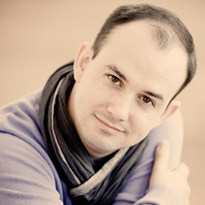 Franco Fagioli, countertenor Franco Fagioli, countertenor I first heard the astounding voice of Argentinian counter-tenor Franco Fagioli performing Mozart's “Venga pur, minacci e frema” from Mozart’s Mitridate. What astounded me about his voice was the power and security throughout his range, and the method of coloratura production in the upper part of the register. Fagioli's voice was rock solid in the lower middle register, a place where the counter-tenor voice can almost disappear, and he was not frightened to utilise the modal voice in the style of a contralto, allowing its distinctive sound to enhance the notes below the stave. A stunning moment in the first section came towards the end, as Fagioli takes both the lowest and highest alternative notes Mozart gives for the phrase "questo cor non cederà" jumping from a G3 modal to a D5 in falsetto. Only the French-Canadian contralto Marie-Nicole Lemieux has attempted this to the best of my knowledge, and that was after Fagioli's version. During the final section, he sings multiple F5's during the phrase "l'implacabil genetore", before producing a stunning A5 on the phrase "questo cor" towards the end. There was no shrillness, and no screaming, just a very vibrant and virile voice, centred and secure, reaching confidently into the soprano register. It comes as no surprise that it was with this aria that Fagioli won the Neue Stimmen international singing competition in 2003, which launched his international career. Currently, the baroque world is raving about Fagioli's stint as Arbace from Leodanro Vinci's Artaserse. In particular, Fagioli's stunning rendition of the fantastic "Vo solcando un mar crudele." The tessitura of this aria is punishing, lying high in the voice, with several A5's. There is also much use of the lower register, with slower phrases lingering in the lower-middle falsetto voice. See the score here (courtesy of IMSLP). End of the mid section, Fagioli solidly transitions into the modal voice on the word "naufragar". He then repeats the phrase in his cadenza, singing from B5 to G3, moving from high soprano, through the treacherous lower-middle falsetto range, and down into tenor territory with no lost of tone, immense confidence, and a stunning sense of musicality. Fagioli's ornamentation in the da capo is even more fiendish than Vinci's original, with several long lines of triplet-quavers, and many additions above the stave. In the final cadenza, Fagioli rises to a glorious, ringing D6, fully supported, without the slightest hint of tension. Check out the aria below, the left has the score, the right is directly from the Nancy production.
Franco Fagioli's latest project is an album devoted to the star castrato Caffarelli. The album, entitledArias for Caffarelli, features arias by several composers created for the castrato, and no less than ten world premier recordings, including arias by two of my favourite Baroque composers, Hasse and Vinci. Below are two videos relating to the album. The first is a promotional video from Naïve records, introducing Fagioli and the album. The second is one of the album tracks, "Fra l'orror della tempesta," in full. The album should be out around the end of August/beginning of September. There will be a series of concerts to promote the album, a list of which can be seen on Fagioli's website. I hope you enjoy listening to this ground-breaking countertenor.
1 Comment
The third movement of Haydn's Cello Concerto in C Major is one of my favourite pieces of music. It is a truly joyous piece, and one which I find uplifting. The first performance I heard was by 13-year-old Han-na Chang, who took my breath away with her skill, musicianship and dynamism. It is no wonder her teacher, Mstislav Rostropovich, was so impressed with her! I hope in this post to give you a little bit of background to the piece, and to leave you with five of my favourite interpretations: including that of Han-na Chang. The discovery of Haydn’s Cello Concerto No. 1 in C Major in 1961 has been called “the single greatest musicological discovery since the Second World War”[i]. The Concerto gives us an insight into the importance and maturity of the Haydn's early compositions, which have often been deemed as of a lower standard those produced later. The discovery of the Cello Concerto in C major by Oldrich Pulkert at the Prague National Museum debunks this idea, as it: “suggests that Haydn was an extremely capable composer of concertos from an early stage in his career.”[ii] The discovery lead to world-class cellists, such as Mstislav Rostropovich and Jacqueline Du Pré, bringing to the musical world a new understanding of the prodigious talent of the early output of ‘Papa’ Haydn. Indeed, many other famous performers, such as Sol Gabetta, Han-na Chang, Julian Lloyd-Webber, and Daniel Müller-Schott have taken up the work, leading to it becoming one of the “most regularly performed concertos from any period[iii]”. Indeed, David Wyn Jones called the piece “one of the finest artistic expressions of the age[iv]”. But how did this extraordinary piece of work come about? Well, for that we have to look back at the time Joseph Haydn spent at the court of Prince Esterházy. Joseph Haydn joined the court of Prince Paul Anton Esterházy in 1761. The family was extremely wealthy with, among other residences, an ancestral home called Schloss Esterházy in Eisenstadt, and a huge palace in Hungary called Eszterháza, constructed in the 1760s. It was with the Esterházy household that Haydn took the role of Vice-Kapellmeister, taking charge of most of the musical enterprise. It is believed that the Cello Concerto in C major was composed around this time, approximately between 1761-5. In 1766, when the Kapellmeister, Gregor Werner, died, Haydn became full Kapellmeister, and took over the role, controlling the whole musical world in the Esterházy court. Both Prince Paul Anton and, after his death in 1762, Prince Nikolaus "the Magnificent", gave Haydn access to an orchestra with which to both perform and compose, and it is with this orchestra in mind that Haydn would have written the Cello Concerto in C major: “In the early 1760s the orchestra is thought to have consisted of around twelve players: four violins, one viola, one cello, one double bass, one bassoon, two horns and two oboes. All of these players were accomplished freelance musicians, as the instrumental parts in many of Haydn’s early symphonies will testify.”[v] The Concerto is believed to have been written for Haydn’s close friend, the ‘cellist Joseph Weigl. Joseph Weigl had joined the Esterházy musicians in June, 1761, and had married the daughter of the “Secretaire” and Chief Bookkeeper of the Esterházy Administration, Anton Scheffstoss[vi]. We know that Haydn held Weigl in high esteem from his own letters. For instance, in 1772, Haydn wrote the following to Anton Scheffstoss: “…please present my respectful compliments to your wife and the Weigl family (to whom I shall write shortly), and to all other good friends…”[vii] Haydn also became Godfather to Weigl’s son, the future composer and conductor, Joseph Weigl Jr. Haydn took his duties as Godparent very seriously, and was very encouraging to Weigl Jr. In January 1794, Haydn wrote the following letter to his Godson: “Dearest Godson! Haydn also helped another of Weigl’s children, Thaddäus, to open a music-dealer’s business in Vienna. He wrote sent Thaddäus a certificate, to present to the Vienna authorities, in which he praised Thaddäus, and gave his own personal backing to the scheme: “I, the undersigned, declare publicly and to all those whom it may concern that the music engraved under the supervision of Herr Thadäus [sic] Weigl distinguishes itself, over and above everyone else’s, to his great advantage; which one would easily expect from such a man as Herr Thadäus Weigl, inasmuch as he himself is a composer, and possesses all the knowledge necessary to conduct such a business successfully. This is also to the obvious advantage of the state, since then it would no longer be necessary for our native composers to have their works sent abroad to be engraved. Given that the Haydn had such close links with the Weigl family, it is highly probably that the Concerto was written, not only with Weigl in mind, but so that Weigl could “show off” his abilities at court. Edward Neil Furse writes that “Haydn wrote a number of highly virtuosic cello parts for his early symphonies, providing Joseph Weigl with plenty of opportunities to impress...”[x] Karl Geiringer says of the piece that it “[offers] the soloist opportunities to display a substantial skill”[xi] The third movement requires the most technical skill. This is most noticeable in the use of the ‘cello’s high register, the fast plunges into the very lowest register, the double-stopped passages, and the semi- and demisemiquaver runs which suffuse the piece. Furse writes that “Virtuosity is a characteristic feature of this final movement.”[xii] For an excellent analysis of the C major Concerto, please see Edward Niel Furse’s Master’s Thesis, which is available online. Click here to read a copy. Below are five different versions of the 3rd Movement for you to watch. I make no judgement as to who is “best”, just that all are thoroughly engaged in the piece, and all play with a level of virtuosity which befit the composition we have been discussing. The performers are: Mstislav Rostropovich Han-na Chang (13 years old when this was recorded!) Julian Lloyd-Webber (Love the shirt!) Daniel Müller-Schott Sol Gabetta Enjoy! [i] Robbins Landon, H. C (1998) The Pre-Classical Concerto and the Concerto Parallel to Mozart. in Layton, Robert (Ed.), A Companion to the Concerto (Oxford: Oxford University Press) p 63.
[ii] Furse, Edward Niel. (2009) Perspectives on the reception of Haydn’s Cello Concerto in C, with particular reference to Musicological writings in English on Haydn’s concertos and the Classical Concerto. (A thesis submitted to The University of Birmingham for the Degree of Master of Music). p 42. [iii] ibid p 5. [iv] Jones, David Wyn (ed.), (2002) Haydn. Oxford Composer Companions. p 45. [v] Furse, Edward Niel. (2009) Perspectives on the reception of Haydn’s Cello Concerto in C, with particular reference to Musicological writings in English on Haydn’s concertos and the Classical Concerto. (A thesis submitted to The University of Birmingham for the Degree of Master of Music). p 9. [vi] Robbins Landon, H. C (Ed.) (1959) The Collected Correspondence and London Notebooks of Joseph Haydn. p 8 (note) [vii] Letter to Anton Scheffstoss, “Secretaire” and Chief Bookkeeper of the Esterházy Administration.German. Robbins Landon , H.C. [Ed.] The Collected Correspondence and London Notebooks of Joseph Haydn. p 15 [viii] Letter to Thaddäus Weigl, Vienna. German. Robbins Landon , H.C. [Ed.] The Collected Correspondence and London Notebooks of Joseph Haydn. p 190 [ix] Certificate for Thaddäus Weigl. German. From an old copy. Robbins Landon , H.C. [Ed.] The Collected Correspondence and London Notebooks of Joseph Haydn. p 190-1 [x] Furse, Edward Niel. (2009) Perspectives on the reception of Haydn’s Cello Concerto in C, with particular reference to Musicological writings in English on Haydn’s concertos and the Classical Concerto. (A thesis submitted to The University of Birmingham for the Degree of Master of Music). p 5. [xi] Geiringer, Karl, (1968) Haydn: A Creative Life in Music (3rd edition, Berkeley: University of California Press) p 235. [xii] Furse, Edward Niel. (2009) Perspectives on the reception of Haydn’s Cello Concerto in C, with particular reference to Musicological writings in English on Haydn’s concertos and the Classical Concerto. (A thesis submitted to The University of Birmingham for the Degree of Master of Music). p 20. Whilst perusing the annals of YouTube in the early hours of the morning, I came across the velvety voice of Italian baritone Riccardo Novaro. Born in Savona, Italy, Novaro studied with some excellent teachers, including the great Renata Scotto and Leyla Gencer. After winning the Cagliari Competition for Young Operatic Artists, Novaro debuted as Guglielmo in Così fan tutte at the Teatro delle Saline in Cagliari. He has since performed in roles such as Dandini in La Cenerentola, and Achilla in Giulio Cesare. The aria I listened to was "Dal fulgor di questa spada", from the role of Achilla in G.F. Handel's Giulio Cesare. The aria is a rage aria, sung by Achilla after Tolomeo has denied him the hand of Cornelia. It is from a live recording. Novaro is comfortable singing this type of aria, adding the right amount of roughness to the voice without losing too much tonal integrity, and giving the right amount of rawness in order to give the performance the edge it needs. In the 'A' section, Novaro expresses perfectly the anger Achilla feels towards Tolomeo, stressing key phrases skillfully. His emphasis on the rising set of arpeggios on the phrase "questa spada vo' che cada" towards the end of the 'A' section has an aggression which is impossible to miss. Novaro's choice of ornamentation in the da capo remains above the stave in the main, vocally 'rasing his voice' as one would if one were angry. In the 'B' section Novaro sings a smoother line, much more legato than the 'A' section. Novaro's roar on the last "valor", however, shows his impatience, and his urgency for vengeance on Tolomeo. Novaro manages both the low-lying, and mid-to-high voice coloratura passages very well, singing each note without slurring, keeping the notes detached in the Baroque style. He also skillfully navigates the large jumps between registers, such as the octave and a half leaps from Bb2 to F4. His punchy style adds to the clarity of both the music and the text. The tempo of the aria has been well chosen: not too fast for Novaro's big voice to become slurred, but not to slow to lose the intensity. Novaro gives a great character performance of this challenging aria, and clearly both understands and communicates the meaning of the text. Do check out his Facebook Fan-Club page, and his Intermusica page. I'm looking forward to hearing more of Riccardo Novaro soon: hopefully in London! It's great when you get to know about a singer still on their way towards the big time, rather than once they've hit the top. You get to see the progress they make, and the artistic choices they take. You get to see them perform with perhaps a little more edginess and with a greater willingness to take risks. Plus, you get to see them for a reasonable price :) But seriously, I was wandering through the annals of YouTube searching for some serious Tenor coloratura (sometimes it just needs to be done) and I found this video of Bogdan Mihai performing the ridiculously difficult aria "Cessa di piu resistere" from Rossini's opera Il Barbiere di Siviglia. It is Almaviva's last aria in the opera, and there are not that many Tenors around that can do it justice. Imagine my surprise when I heard it performed immaculately by someone I had not yet heard of before. The Bb maj aria starts abruptly at 0:54 with a demi-semi-quaver run from the unison strings, launching the Tenor into a perfect cadence through the major triad stepping down from the dominant to the tonic via the mediant. The A section has the tenor leaping or running mostly between F3 and A4, with some quick-running key modulations during the semi-quaver and demi-semi-quaver coloratura. Mihai deals with this easily, resorting neither to heavy aspiration nor to slurring. One particularly horrible bar of coloratura is placed squarely around the G4 mark with a throw-away Bb4 chucked in just for fun. Yet Mihai is completely unphased by this rather evil piece of Rossini writing, and drives onwards towards the next section. Remember, this is a Tenor aria, the last one of the opera, and this is only the A section! The B section modulates into Db maj, and is marked Andante. The melodic line here is a particularly lovely one, moving from the Dominant, to the Mediant, to the Leading Note, and finally onto the Tonic. The effect is that of a slow dance; a playfulness in the vocal line which matches the sentiment of the libretto: "Forget now thy days of tyranny/ Look up, my fairest treasure, Let us enjoy in liberty/ Long days of love and pleasure!" Mihai uses the lightest touches to run between the various arpeggios, and opens out to a fuller resonance on the Ab4 which highlights the word "fairest" in the phrase above. The next part of the B section is the exquisit use of demi-semi-quaver hexlets and hemi-demi-semi-quaver descending runs on each syllable in the line: "All sweet delights and blessings/ Will love upon thee show'r" The use of these runs is to musically alliterate the verb "to shower" which ends the line. Mihai's speed, flexibility and agility imbues this most wonderful compositional device with both sweetness and enchantment: refusal is not an option! Of course, the word "blessings" is the highlight of the phrase, and as such receives an ascending coloratura run up to Ab4, just as the word "fairest" did in the previous phrase. To finish with, the final perfect cadence on the repeat of the word "showr'd" drops to Db3, the lowest note in the whole aria. The final section is pure Rossini - a joy to listen to but absolute hell to sing! Extended coloratura at break-neck speed, chromatic ascending and descending runs, Bb4's galore, and the tessitura is firmly around the G4 mark for the whole section. Mihai takes all of this in his stride, and sings with the ease of one performing a renaissance madrigal. The final Bb4, interpolated as opposed to written, but expected nonetheless, is solid and resonant, and perfectly concludes this awesome aria. The vocal fach that this aria was conceived for is that of the Leggiero Tenor, or the Tenore di Grazia. This is the highest of all the Tenor sub-divisions, and is effectively the equivalent of the Coloratura Soprano. It is also the successor, in male operatic terms, of the great Castrati - if you compare arias like this to those written for Senesino, such as "Al lampo dell'armi" from Handel's Giulio Cesare, it is easy to see this to be the case. So how is it that Mihai, an obvious Leggiero Tenor, started his career as a Baritone? Well, this is not as difficult to understand as it may at first seem. In the vocal structure of the Leggiero Tenor, there are two distinct voices: the chest voice and the head voice. The head voice in the Leggiero Tenor can often sound much like a falsettist, as if the singer is no longer singing in his modal voice. Also, the chest voice of the Leggiero Tenor usually sounds well developed and resonant much earlier than the head voice. Thus, it is quite common for this rare male voice to start its life as a Lyric Baritone, or even lower, and stay thus until such a time as the head voice is stronger and recognized for what it truly is. It was the great Soprano Mirela Freni, with whom Mihai was training, that first discovered that a potential Leggiero Tenor was ready to face the world stage. Mihai says the following in an interview with the team at Rosenblatt Recitals (click here for the full interview): "Changing the tessitura was quite unexpected and it was a very difficult decision to make. I had been singing as baritone for 8 years by then. After graduating from the Academy of Music in Bucharest I auditioned for a masterclass with Mirella Freni in Italy. Presenting myself as baritone, I got the most surprising reply: – “Per me non sei baritono, sei tenore...se vuoi entrare nellá mia accademia, devi cambiare la tessitura vocale…” (“You look like a tenor to me, not a baritone… if you wish to attend my academy you must change your tessitura…”). I learnt a lot from soprano Mirella Freni. One of the most important things was repositioning the voice to the tenor range, acquiring the luminosity in a voice that had been trained as a different tessitura (baritone)." Mihai went on to have success in Rossini’s La Cenerentola, and in the roles of Percy in Anna Bolena, Leicester in Maria Stuarda and Roberto in Roberto Devereux by Donizetti. He also premiered in England the roles Goffredo and Carlo in Rossini's Armida. Most recently, Mihai performed as part of the Rosenblatt Recitals Series held at the Church of St. John's, Smith Square. Here he reprized the aria of Count Almaviva, and he also performed arias by Vinci, Caccini, Carissimi, Mozart and Donizetti. Unfortunately I was unable to attend the recital, but the team people at Rosenblatt Recitals have posted a few videos of the arias on their YouTube site, as well as on their website (see Mihai's archived page). Both Juan Diego Flórez and Lawrence Brownlee have performed as part of the Rosenblatt Recitals Series, making the series a key barometer in the world of the Leggiero Tenor (as both Flórez and Brownlee sing in this fach). I predict that we will be hearing many great things from this wonderful Tenor, and that the opera world has acquired yet another excellent Leggiero Tenor. Mihai will be performing in Mozart's Requiem (K626) at St Joseph Cathedral Bucharest on 13th April 2011. The next Rosenblatt Recitalist will be Soprano Elizabeth Llewellyn, on the 13th April 2011, and I will definitely be going to see her perform. I shall leave you with a couple of videos from the Recital. The first is "Dalla sua pace" from Mozart's Don Giovanni, and the second is Mihai's encore: "Poate ca n-am iubi atat" by Mauriciu Vescan.
Sometimes there are pieces of music which, from the first time you hear them, touch your soul in a way that holds you trapped in the flow of the music from beginning to end. Add to that a performer that not only interprets, but actually embodies the piece, and you have something really special. This happened for me when I first heard Tatiana Troyanos sing 'Se pietà di me non senti' from Handel's Giulio Cesare. This Da Capo aria (A-B-A format) expresses the anguish of a woman who thinks (in the tradition of good opera) that she has lost her lover. The aria comes in the second act of the opera, when Cleopatra (to whom the aria is ascribed) realises, after trying to seduce Caesar disguised as her own maid 'Lydia', that she truly loves him. The libretto, roughly translated, is as follows: If you don't feel pity for me, Oh, Heaven, I will die You need to give peace to my torment, Or this soul will cry As Tolomeo's men approach to assassinate Caesar, Cleopatra reveals her true identity, and begs him to flee. He refuses, instead opting to fight. Cleopatra later hears that her love has died trying to escape. This turns out to be false of course, but the sorrow in the aria shows her affection, and her loss, to be real. The aria is in the key of F# minor which, according to Hugo Leichtentritt in "Handel's Harmonic Art" from the Musical Quarterly, Vol 21, No. 2, is the key which "denotes tragedy" and indeed, the tragic nature of the libretto is acutely realised by the score (other examples of a similar use of this key by Handel are 'Ma Chi Punir' from Flavio and 'With Darkness Deep' from Theodora). The scoring of repeated quavers in the continuo section mimics the scoring in Caesar's powerful warning to Tolomeo (Va Tacito e Nascosto) where Caesar's magnificence and power are beyond question, though at a much slower pace. The stark cries of the violin, with it's three-semiquaver movement following a semiquaver rest, ending usually on an emphasised crotchet, coupled wit the continuo give the impression of a funeral march with lamenting mourners. The chromatic ascent in the vocal line from bar 12 to bar 14 in the 'A' section on the words 'io moriro' (I will die) adds a sense of desperation, while the extended orniment on the last 'io moriro' of the 'A' section, and the ornament on the 'alma spirero' in the 'B' section (bars 36 - 38) are like a desperate cry to heaven for understanding and relief. Most impressive of all though in this performance is the interpretation by Tatiana Troyanos. The emotion and sincerity shown in the aria are very moving: even without seeing her face, you can feel the depth of her pain. For me, the second airing of the 'A' section is the most powerful. |
MOST VIEWED POSTS
© James Edward Hughes 2013
 RSS Feed
RSS Feed
